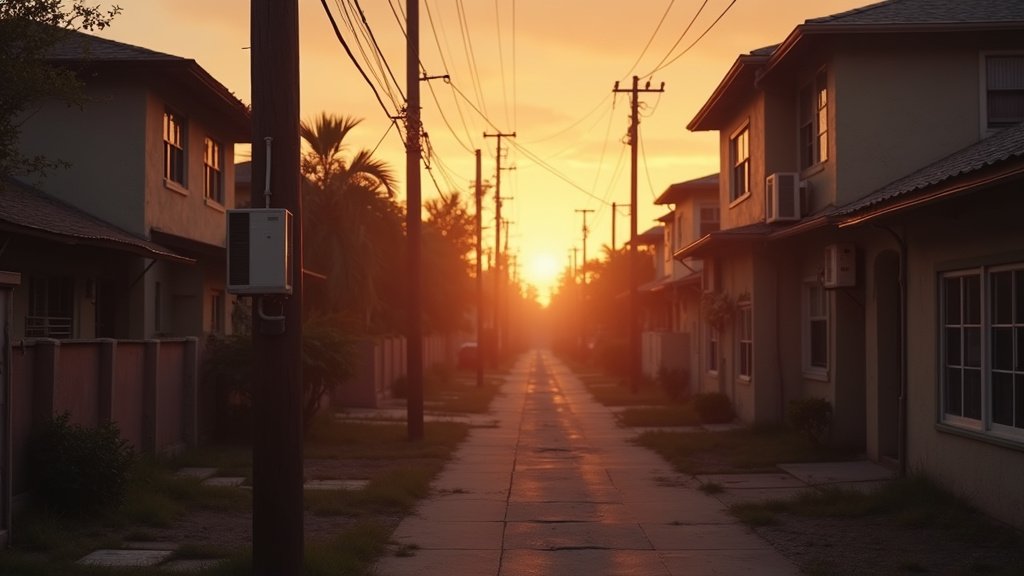Miami, a city perpetually associated with sunshine and warmth, is now confronting a far more dangerous reality: extreme heat. As temperatures consistently break records and heat advisories become a summer staple, a new initiative is underway to capture the granular truth of how this escalating crisis impacts residents, particularly in its most vulnerable communities. This critical effort, leveraging sophisticated heat sensors, aims to bridge a vital data gap and translate real-time environmental conditions into actionable policy.
Miami’s Growing Heat Burden
Miami-Dade County already grapples with extreme heat as its deadliest weather hazard, leading to an estimated 600 excess deaths annually. Between 2018 and 2022 alone, Florida recorded over 26,000 emergency room visits and 5,000 hospitalizations attributed to heat-related illnesses. The data paints a stark picture: since 1970, the county has seen an average increase from 84 to 133 days per year where temperatures soar above 90°F, a trend projected to continue rising. In 2024, the region experienced an unprecedented 60 days with a heat index reaching or exceeding 105°F, with some days in May 2024 hitting a record-breaking 112°F “feels-like” temperature. This intensified heat is not evenly distributed; the urban heat island (UHI) effect, exacerbated by dense development and reduced tree canopy, makes certain neighborhoods significantly hotter than others. Studies indicate that the Miami metropolitan area can be, on average, 8.3 degrees hotter due to the UHI effect, with localized pockets experiencing even greater temperature increases.
The “Climate Justice” Sensor Initiative
Responding to these alarming realities, the City of Miami, with funding from the C40 Cool Cities Network’s Heat, Health, and Equity Challenge Fund, has launched a significant project to gather precise, localized temperature and humidity data. This initiative is specifically targeting seven “climate justice” neighborhoods identified as disproportionately affected by extreme heat: Overtown, Liberty City, Little Haiti, Allapattah, Little Havana, Flagami, and the Little Bahamas. These areas often bear the brunt of heat exposure due to historical inequities, including less green space and older, less energy-efficient housing.
The project involves installing an array of sensors in approximately 70 households across these communities. Each participating household receives three sensors: one placed indoors near the air conditioning unit, another outside in a protective casing, and a third acting as a router to transmit the collected data. This real-time data stream allows the city to meticulously document temperature disparities both indoors and outdoors, providing critical insights into how heat infiltrates homes and affects daily life, especially for residents who may lack consistent access to cooling.
Bridging the Data Gap with Community Power
Spearheaded by the city’s Office of Resilience and Sustainability (ORS) and The Miami Foundation, in collaboration with local community-based organizations (CBOs) like Catalyst Miami, the project emphasizes a participatory research approach. CBOs are instrumental in recruiting residents, facilitating sensor installation, and ensuring community engagement. This direct involvement is crucial, as residents often possess firsthand knowledge of the heat’s impact, knowledge that official measurements taken at locations like airports may not fully capture. As Camilo Mejia, director of policy and advocacy at Catalyst Miami, noted, “This is participatory research. Without community participation, it’s hard to come up with policies and programs that actually address the issues that community members are facing.”
The collected data will be compiled into a Geographic Information System (GIS)-based map. This visualization will be invaluable for identifying specific “hot spots” within neighborhoods, understanding the relationship between outdoor and indoor temperatures, and assessing energy burdens. This granular data is essential for developing targeted interventions and policy recommendations, moving beyond general observations to evidence-based solutions.
Resident Voices and the Imperative for Action
For residents participating in the initiative, the data collection is more than an academic exercise; it represents a tangible step towards much-needed change. Many residents have expressed frustration with studies that do not lead to concrete actions. Tania Diaz, a resident of Overtown, stated, “The compensation wasn’t the motivation. The motivation was that maybe through this, we can find better ways to accommodate the Miami population during heat season.” Another resident, Bason, emphasized, “You could study all you want, but if you’re not moving on after the study, it means absolutely nothing to me.” This sentiment underscores the community’s demand for follow-through and the transformation of data into meaningful improvements in living conditions and public health.
A Cooler Future for Miami?
The findings from this sensor initiative are slated to be analyzed and shared with the participating communities before informing policy recommendations. This data will be critical for initiatives like Miami-Dade County’s Extreme Heat Action Plan, which seeks to cool neighborhoods through green infrastructure, improve access to cooling in homes, and enhance public education and outreach. The city’s commitment, bolstered by its designation of a “Heat Season” from May 1 to October 31 and the appointment of the world’s first Chief Heat Officer, signals a proactive approach to a growing current affairs challenge. Ultimately, this sensor project is a vital component in Miami’s ongoing battle against the intensifying effects of extreme heat, aiming to ensure that current and future policies are grounded in the lived realities of its most affected residents and that the news of rising temperatures leads to tangible, equitable solutions.
Current Affairs and News in Miami
This initiative highlights the pressing current affairs surrounding climate change adaptation in urban environments. The news from Miami underscores a broader trend where cities are increasingly relying on hyper-local data and community engagement to address environmental challenges. The success of such projects is critical for informing urban planning, public health strategies, and ultimately, for building more resilient and equitable cities in the face of a changing climate.





